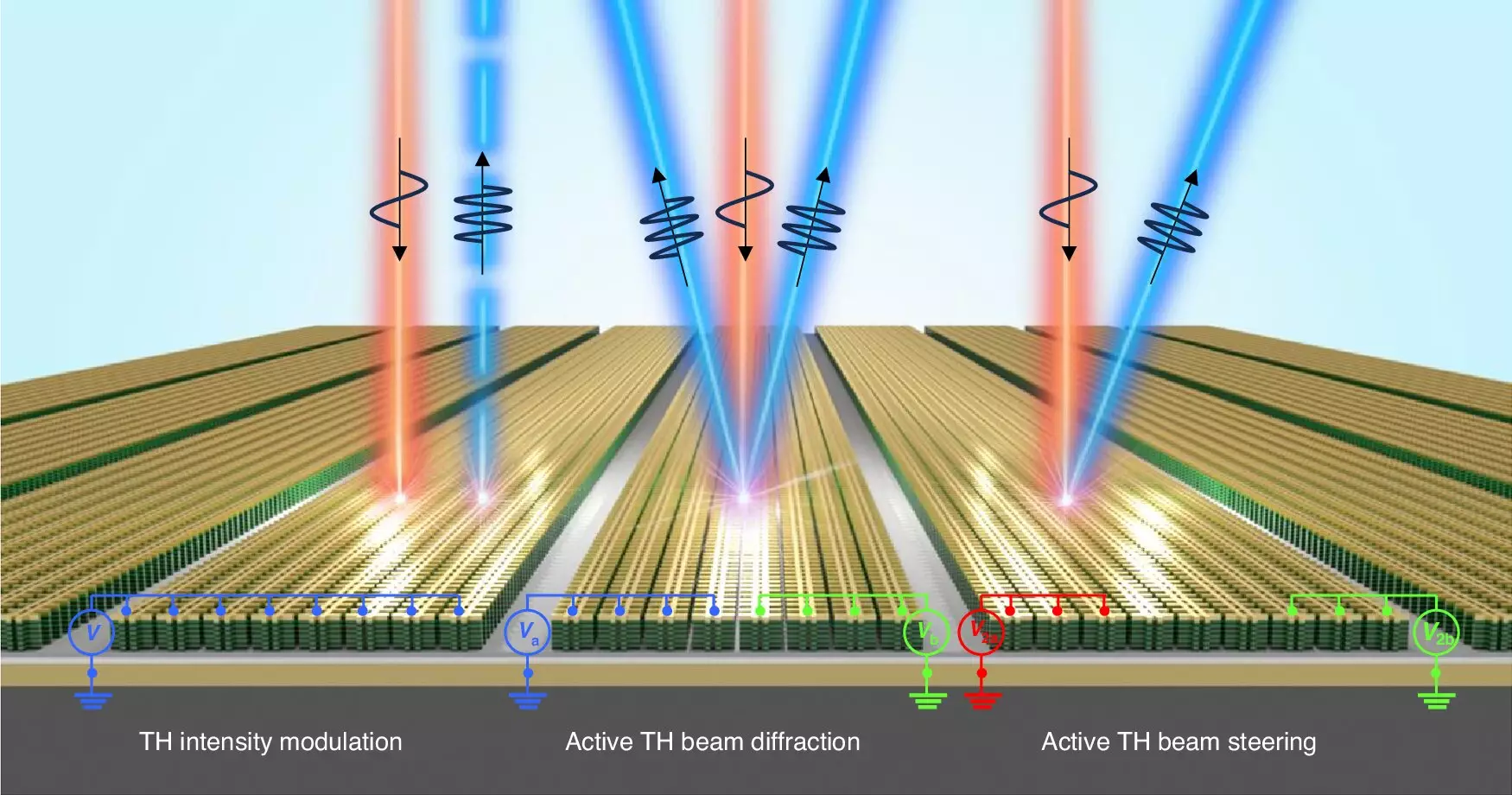Recent developments in optics have led to innovative technologies that significantly enhance the way we manipulate light. A groundbreaking study has emerged, focusing on nonlinear optical metasurfaces capable of transforming light properties in ways previously thought unattainable. These extraordinary structures, smaller than the wavelength of light, represent a leap forward for various sectors, such as telecommunications and medical diagnostics. With this new technology, we can expect to see revolutionary advancements in quantum light sources and advanced imaging tools.
At the forefront of this research is Professor Jongwon Lee from the Department of Electrical Engineering at UNIST, whose team has achieved stunning results in electrically tunable third-harmonic generation (THG) indexed with intersubband polaritonic metasurfaces. For the first time, they have produced experimental setups that boast a staggering modulation depth of 450% in their THG signals. Compounding this success, they also attained an impressive suppression of zero-order THG diffraction by 86%. It is worth noting that this magnitude of modulation depth and suppression is rare in the field, marking a significant achievement in nonlinear optics.
This metasurface’s ability to exceed 180 degrees in local phase tuning and enable THG beam steering through phase gradients opens the door to new functionalities in optical devices. Traditional nonlinear optics typically struggle with electrical modulation, but Lee’s innovations offer promising solutions. By allowing voltage control over second-harmonic generation (SHG), this research lays the groundwork for creating even more sophisticated optical instruments that can integrate easily into everyday technology.
The implications of harnessing this technology are immense. Nonlinear optics has already transformed light manipulation, enabling the generation of multiple wavelengths from single laser sources. Innovations like the green laser pointer serve as a familiar example of this transformative technology. The slim, flexible nature of the optical instruments produced by this research—potentially as thin as paper—positions them ideally for incorporation into a myriad of applications, from mobile devices to advanced medical diagnostics and beyond.
As Professor Lee articulates, the ability to independently control both the intensity and phase of THG using this new metasurface is a game changer. This unprecedented control over light could lead to advancements in essential fields such as cryptography, facilitating more secure data transmission, and dynamic holography, paving the way for immersive visual technologies. Furthermore, the research holds tremendous prospects for developing next-generation quantum sensors, particularly in the domains of communication and information technology.
The introduction of electrically tunable nonlinear optical metasurfaces marks a pivotal moment in optical engineering. By enhancing our capability to manipulate light with a level of precision previously considered unrealistic, this technology could soon permeate various aspects of modern life, creating instruments that are not only powerful but also portable and efficient. As the field continues to evolve, we stand on the verge of a new era in optics that promises to redefine our understanding of light and its applications.

